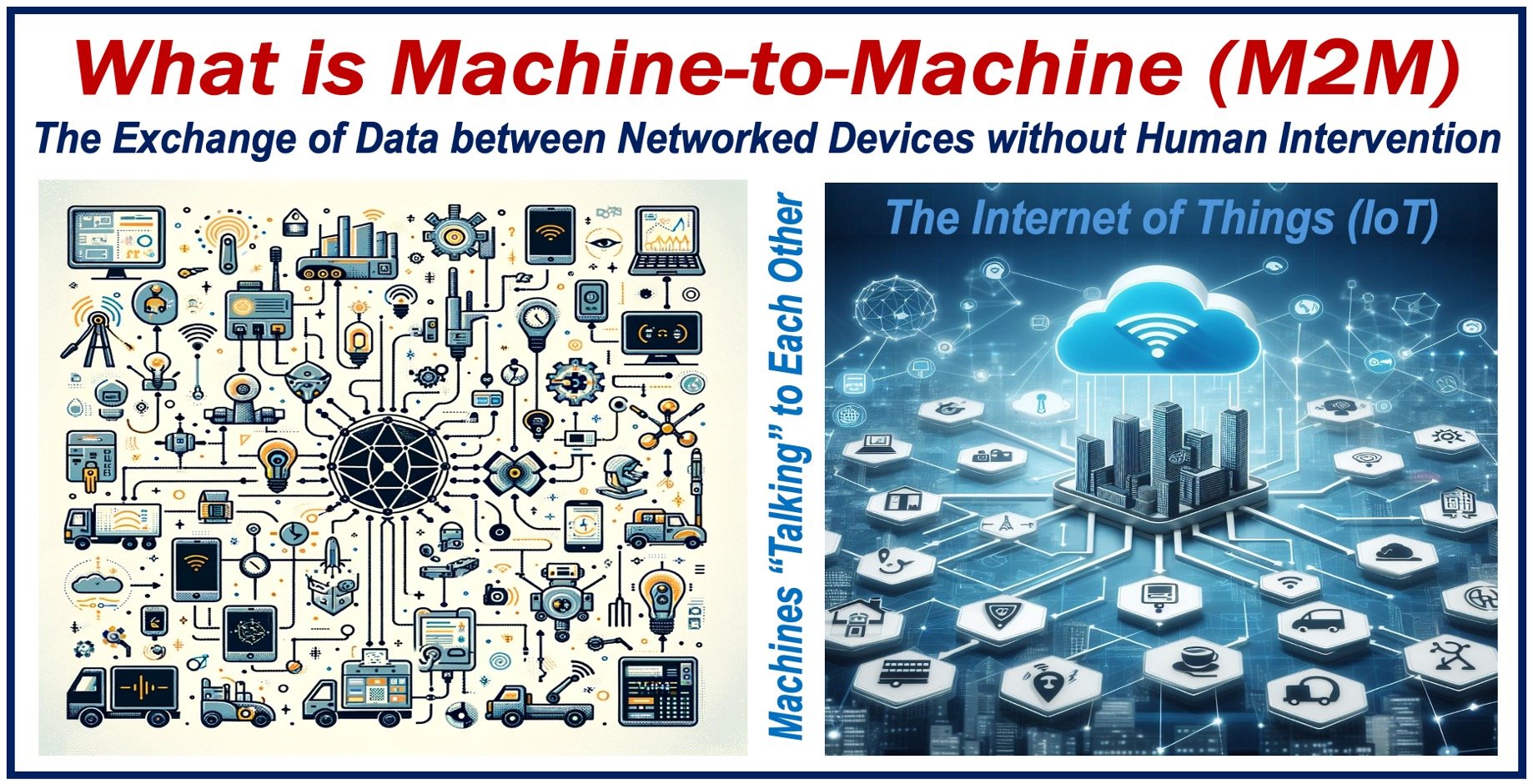Machine-to-Machine, or M2M, refers to direct communication between devices using wireless, wired, or any other communication channel. M2M operations are common among smart devices.
A smart device autonomously performs tasks, communicates with other devices, adapts, and learns from data without human intervention. Examples include smart fridges, smart TVs, smart locks, smart home assistants, and autonomous vehicles.
Techopedia.com has the following definition of the term:
“Machine-to-Machine (M2M) refers to a wireless or wired network setup that allows devices of the same type and ability to communicate freely.”
“This type of system can be used in a variety of ways and has advanced over the last few decades with the creation of global Internet and IP network systems, facilitating enhanced and efficient communications over long distances and between large numbers of devices.”
Machine-to-machine and IoT
The concept of M2M is a cornerstone of IoT (the Internet of Things), where devices are able to connect and exchange information with no human intervention.
Your morning alarm clock, for example, not only wakes you up but also notifies your coffee market to start brewing. That is M2M in action.
Put simply, M2M involves two or more machines “talking” or sending data to each other, autonomously, that is, without human involvement.
Far-reaching implications
This technology is not just about convenience in our daily lives, it has far-reaching implications. In healthcare, M2M technology can monitor patients remotely. Small devices can send vital patient data to medical professionals who may be located in another town or even a different country.
M2M can significantly streamline business processes. Vending machines and smart shelves in warehouses and retail stores can automatically request a refill or restock when necessary. This means that there is less waste, more efficient supply chains, and better inventory management.

Machine-to-machine examples
Below, you can see ten examples of devices that are capable of machine-to-machine operations:
-
Smart Thermostats
Regulate home temperature by communicating with weather services.
-
Wearable Health Monitors
Track vitals and send data to healthcare providers.
-
Industrial Sensors
Monitor machinery and alert for preventive maintenance.
-
Smart Meters
Report energy usage directly to utility providers for billing and analytics.
-
Fleet Management Systems
Track vehicles and manage logistics in transportation.
-
Smart Agriculture Systems
Monitor soil and weather conditions to control irrigation.
- Supply Chain Trackers
Update inventory levels automatically and reorder stock.
-
Connected Security Cameras
Send live feeds to security teams and trigger alarms.
-
Vending Machines
Notify suppliers about stock levels for refilling.
-
Smart Retail Shelves
Detect product quantities and help in price optimization.
Conclusion
Machine-to-machine communication can make our lives easier, and our businesses more efficient. It can also help improve healthcare services. With smart devices taking over simple tasks and complex calculations, we can focus on what is truly important.
Video – What is Machine-to-Machine (M2M)?
This video presentation, from our sister channel on YouTube – Marketing Business Network, explains what the meaning of ‘Machine-to-Machine (M2M)‘ is using simple and easy-to-understand language and examples.
